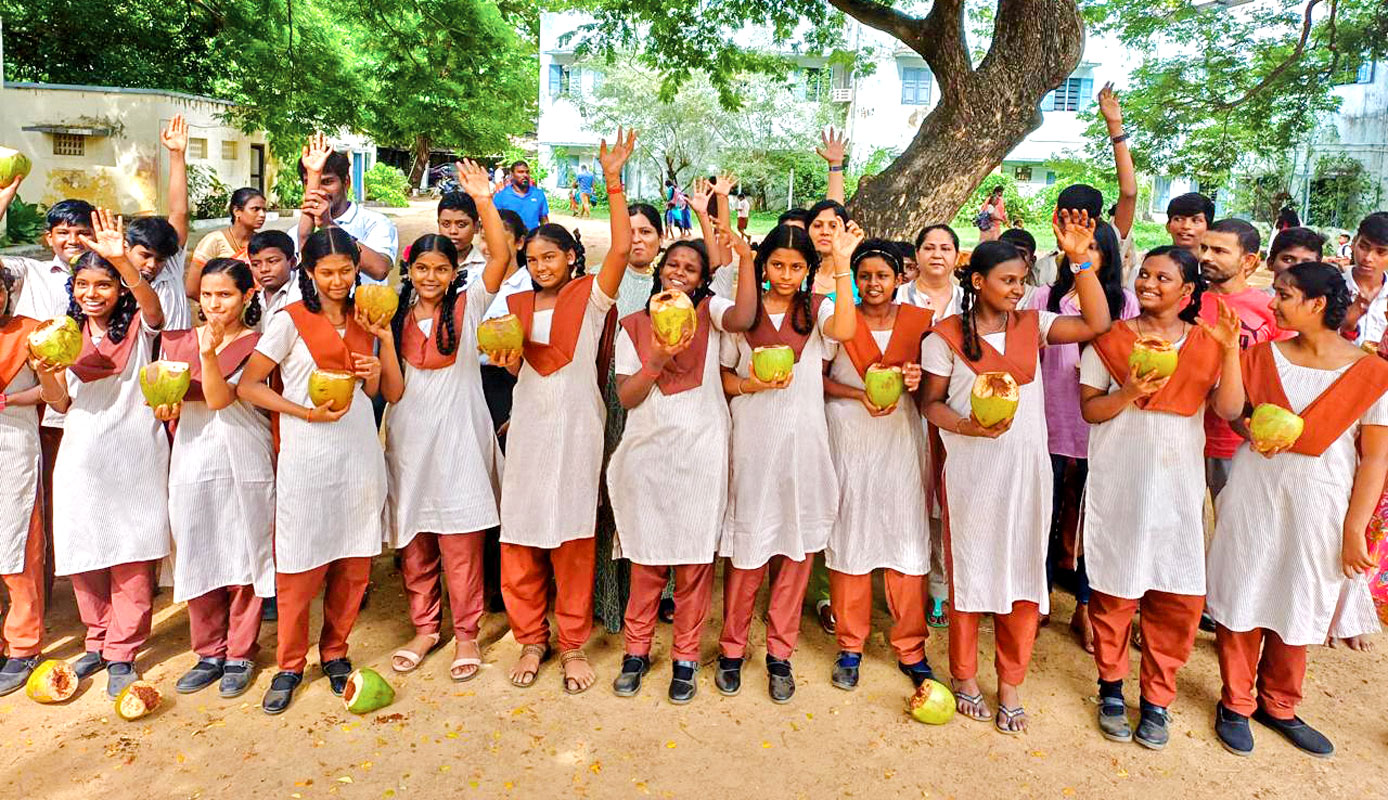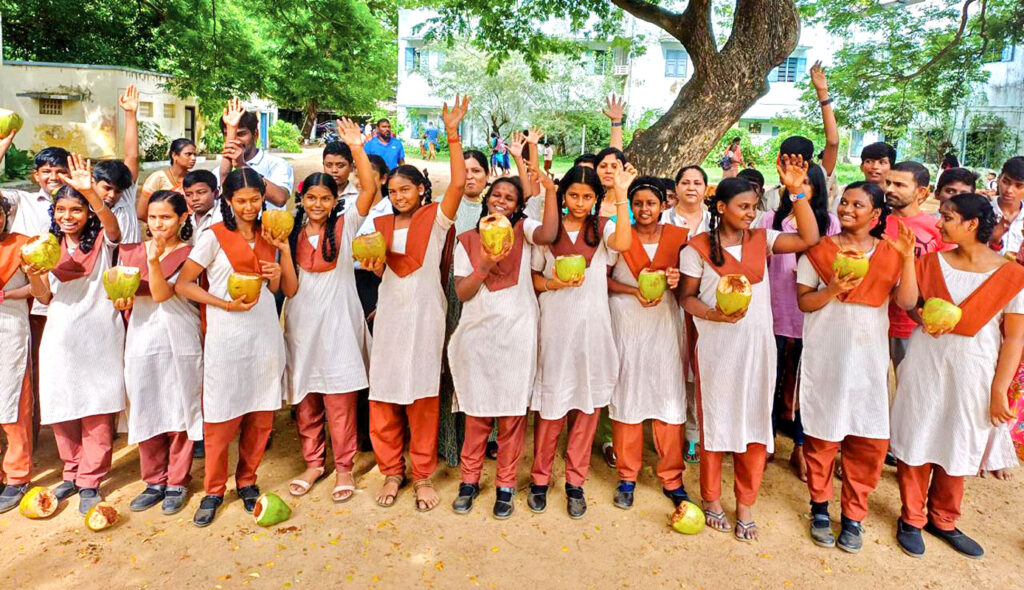
The Rotary Club of Chennai Bharathi, RID 3234, has adopted a fairly new and interesting method to tackle mental wellbeing…. by pressing into service a triple combination of sound, art and dance therapies to engage a large number of people, with the special focus being on those who are dealing with various issues related to mental health.
Ever since she began her year as the club president this July, Nisreen Madraswala has been on a “mission to create spaces for individuals to speak, listen and heal from mental health issues which can later manifest into serious health problems if left untreated or unaddressed.”
Her first project for the year was with the club’s Interact school — BNS School in Chennai — which involved the participating children sowing native seeds. “Prior to the event, we had asked the children to collect during their summer holidays local seeds from fruits such as jackfruit, mango, melon etc, and they planted them in coconut shells on their school campus.”

But the interesting part is that the planting, done in small groups, was carried out with “sound therapy” in the background. Sandhya, a sound healer from the Aasmaa Studio, which is an alternative and holistic health service provider, was present there with the different objects such as gongs, and different kinds of bowls, striking which sounds of different frequencies are generated. These are meant to create positive energy, calm the mind and soothe frayed nerves. “These sounds reach our inner selves, rejuvenate and even heal us,” says Nisreen.
With these sounds in the background, the children planted the seeds… “they focused, and even meditated.”
The general objective of this project of planting seeds, in which 40 girls and boys participated, was to make them detached from the outcome of their action, and make them realise that they would not enjoy the benefits of what they were doing that day. Somebody else would enjoy the fruits of the trees they were planting. And this is very important during these “times of instant gratification where kids are exposed to social media handles. If they don’t receive immediate applause, many of them take it as rejection and some of them can feel dejected and turn to substance abuse. Coping mechanisms in the mental realm are not clear or taught as is being done in the physical realm,” she says.

More recently, in a subsequent project done by the club titled Immersive Experiences, a ticketed event (charge per person ₹1,299) done to fulfil her “vision to create safe spaces in mental health issues”, in which 40 persons participated, there was a combination of three different therapies — sound, art and dance. In small groups, the participants were put through sound healing by Sandhya, dance movement therapy by Masuma Wagh, who runs a school for autistic children in Mysuru, and art therapy by Aishwarya from Rafiky in Chennai. Each session lasted 40 minutes.

“They created mind-blowing sessions, offering the participants insight into their suppressed emotions by making them talk, draw, move and express themselves in different ways,” says Nisreen, who as a student of Sociology, has studied depression as a subject during her graduation course.
She elaborates that having herself struggled with issues related to mental depression… “otherwise why would I be invested in these projects for my club… I’ve tried all kinds of things over 30 years and found group therapies work the best. Compared to 1:1 counselling, what helped me most was meeting people and understanding their journeys. Till I was exposed to various narrative platforms, I used to think that I had done something wrong and hence was facing these issues. But after such therapies/sessions, I realised that I was the victim, and wondered why was I feeling guilty. Such sessions helped me get out of the victim mode, and I want the others facing similar issues to have a similar experience. It is as simple as saying I have a cold, and I need to rest and people around me shouldn’t make a big fuss about it.”

One doesn’t blame oneself for catching a cold, so why should people feel guilty or responsible when they face some mental health related problems, is the question to be asked and answered. She herself faced “depression at a time when I was supposed to be very happy. It happens as the brain has different ways of behaving in different situations in different people.”
In the art therapy session, the participants were encouraged to draw whatever came to their mind and asked to pass around the drawing, to which others added and once it returned to that person, “we found many people had answers or solutions to what was buzzing in their minds.”

The guided movements in the dance therapy session are designed to release tension and suppressed emotions stored in the body. The therapist from Mysuru, Masuma, has conducted several sessions over the years for parents and children with autism, and has found it extremely beneficial. “In my experience, group therapy works as people shed their inhibitions slowly and in a gradual manner as the therapist guides and motivates them. There is no force to do any of the dance movements; it’s a flow.”

Her club members, all of them women, “but we are open to taking in any gender”, have embraced this project and will take it forward in the coming days. Projects are planned for entrepreneurs, special children (free of cost) and others. As this club holds both physical and online meetings, the president throws open the online meetings to all members for what is called the ‘buddy call’, during which time every member is given two minutes to talk about the highs and lows of their week. “The members love it, and even those who are usually shy and don’t talk much, participate in it.” At her installation meet, the invocation was replaced by a sound healing session.






